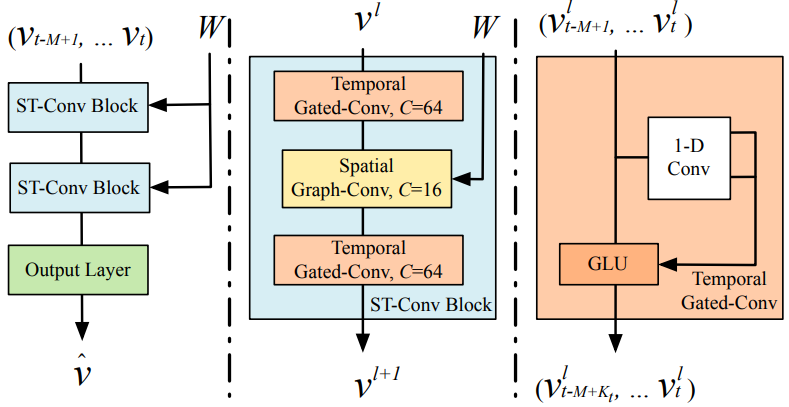论文原文:https://arxiv.org/pdf/1709.04875.pdf 作者信息:北京大学 Bing Yu 博客参考:https://blog.csdn.net/s_842499467/article/details/104776951 其它参考:https://github.com/Knowledge-Precipitation-Tribe/STGCN-keras/tree/master/ppt 项目地址:https://github.com/FelixOpolka/STGCN-PyTorch
本文的ST-Conv Block
- 空间特征采用 Graph CNNs
就是普通的GCN
- 时间特征采用 Gated CNNs
没有采用 RNN,LSTM 等常见处理时序信息的网络(不断有研究表明,CNNs处理时序信息的能力也很强);
本文采用门控卷积对时间维度进行建模,当然传统CNNs是无法非常好地处理时序信息的,其中的卷积采用的
“因果卷积”。(CNNs处理时序信息可以并行化计算)
因果卷积:众多卷积操作中的一种,其与 LSTM 等网络非常类似。As mentioned above, the TCN is based upon two principles: the fact that the network produces an output of the same length as the input, and the fact that there can be no leakage from the future into the past.
考虑到,如果要对越长的时序信息进行建模则模型需要越深 -> 采用 Dilated Convolutions
ST-Conv Block组成
有时域卷积,空域卷积组成
图中分别是:整个模型架构、ST-Conv Block 组成以及 Temporal Gated-Conv 组成


